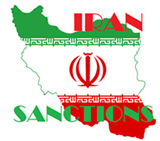Importance of PVC in Indian Petrochemical Industry
|
PVC, one of the oldest forms of commodity polymers, is today regarded as an infrastructure plastic and finds various infrastructure applications, such as in pipes, ducts, wires, cables, floorings, windows and roofing. Furthermore, the use of PVC in other sectors such as automobiles, medical and healthcare, packaging and sports and leisure is also increasing.
PVC is a thermoplastic composed of 57% chlorine and 43% carbon. It is less dependent than other polymers on crude oil or natural gas, which are non-renewable, and hence PVC can be regarded as a natural resource saving plastic. Although PVC can be produced from various hydrocarbons including coal, the bulk of the world's PVC is currently manufactured using ethylene, which is combined with chlorine to produce ethylene dichloride (EDC), the raw material for the manufacture of vinyl chloride monomer (VCM). VCM is further polymerized to produce PVC. PVC is also produced using calcium carbide, which is widely prevalent in China.
According to Chemical Marketing Associates Inc. (CMAI), the global consumption of PVC in 2010 was 34.8 million mt from an overall capacity of 46 million mt, and accounted for 18% of the total consumption of polymers. The global demand for PVC is estimated to rise to 44 million mt and the global PVC capacity is expected to rise to 55 million mt by 2015.
According to industry sources in India, the country's PVC demand is currently pegged at 2.08 million mt/year and the capacity is pegged at 1.33 million mt/year. The consumption of PVC in India is expected to increase to 3.1 million mt/year by 2016-17 and the nation's PVC capacity is expected to rise to 1.63 million mt/year. As is evident from the above-mentioned demand and supply numbers, PVC demand is expected to exceed supply.
PVC pipes
Pipes have been the biggest end-use sector for PVC with a share of approximately 70%. The use of PVC in pipes results in energy saving at all stages of the life cycle of a pipe, namely, extraction of raw materials, production, transportation, usage and recycling. Besides saving energy, PVC pipes also help protect environment by reducing CO2 emissions. With an investment of Rs. 20 lakh crore towards infrastructure development in India in 2011-12 and a projected investment of Rs. 40 lakh crore till 2016-17, the consumption of PVC in pipes is expected to progressively increase and reach 10 million mt by 2017 from a current estimated consumption of 6 million mt. Furthermore, energy savings from using PVC in pipes would amount to 51.6 million MWh by 2016-17 from an estimated 31.4 million MWh savings currently and 16 million MWh savings in the period 2002 to 2007. Likewise, reduction in CO2 emissions would amount to 182 million mt by 2016-17 from 57.7 million mt in 2006-07 and an estimated 110.6 million mt currently.
PVC pipes have the following advantages over ductile iron (DI) and galvanized iron (GI) pipes:
• PVC pipes are light in weight and easy to install.
• PVC pipes are non-corrosive.
• Pipes made of PVC exhibit a low coefficient of friction.
• PVC pipes are more resistant to abrasion than DI or GI pipes.
• PVC pipes exhibit a low thermal conductivity.
• PVC pipes exhibit flexibility and biological resistance.
• PVC pipes are non-toxic and maintenance-free.
• PVC pipes boast of excellent jointing techniques.
It is estimated that in India, PVC usage in pipes will reach 9,790 kt by 2017 from an estimated current consumption of 6,000 kt.
PVC windows
PVC has become a popular material for window and door frames and PVC windows are being preferred over the traditional aluminium windows owing to the following advantages of PVC over aluminium and wooden windows:
• PVC windows provide excellent thermal insulation as PVC is a poor conductor of heat.
• PVC windows are noise-proof, dust-proof and monsoon-proof.
• Energy savings can be realized during all the stages of the life cycle of PVC windows.
• PVC windows exhibit durability and long life. As per British Plastics Federation, the life expectancy of a PVC window is over 40 years.
• PVC windows exhibit design flexibility and versatility and are easy to fabricate and install.
• Windows made of PVC are stylish, elegant and aesthetically pleasing.
• PVC can be recycled relatively straightforwardly.
• PVC windows can save up to 30% of electricity costs.
The popularity of PVC windows is increasing in India, particularly in major metro cities. From less than 1.5 kt in 2002-03, the consumption of PVC in windows increased three times to 4.6 kt in 2006-07. During the current fiscal year, the consumption is estimated to reach 26 kt. Furthermore, the fact that the development focus has now shifted to Asia has led world-renowned window manufacturers to set up their fabrication units in India and by 2016-17, the consumption of PVC in window profiles is estimated to reach 205 kt.
PVC scenario in India
PVC capacity growth in India in the past has been significantly lagging behind demand growth. PVC demand in the country is increasing at approximately 10%, which is more than twice compared to the world average of 4%. However, for the consumption of 1.9 million mt/year, almost 600 kt/year is being imported from different parts of the world. Despite the substantial PVC capacity addition by Chemplast Sanmar, from 30 kt to 250 kt, the gap between demand and supply of PVC in the country is expected to widen during 2012–2017. Heavy investments by the government in infrastructure projects and focus on increase in irrigational land are the main drivers for the increased consumption of PVC. Moreover, the introduction of the eco-point system for housing and funding by various International Agencies such as World Bank and Asian Development Bank for water management projects in the country will give major boost to the PVC demand.
Thus, it can be said that a large-scale PVC plant in India is a promising venture provided that it is furnished with competitively priced energy and adequate supply of chlorine and ethylene.
Abbreviations:
mt: metric tonne (1000 kg)
kt: kilo tonne (1000 mt)
MWh: mega watts hour
END
For further information, commentary and interviews, please contact us on +(91-22) 61772000 and info@polymerupdate.com
comments powered by Disqus
Sign up for our newsletters
More like this

The Aftermath of the Intensified Iran Sanctions Read More

Clintons' visit and India's dilemma Read More

Bio-based plastics: A market researcher's viewpoint Read More

Sebacic Acid—a unique, bio-based feedstock for green polymers: Interview with Roland Glotzer Read More

Double-digit growth possible in engineering plastics – Sanjay Jain, DSM India Read More




